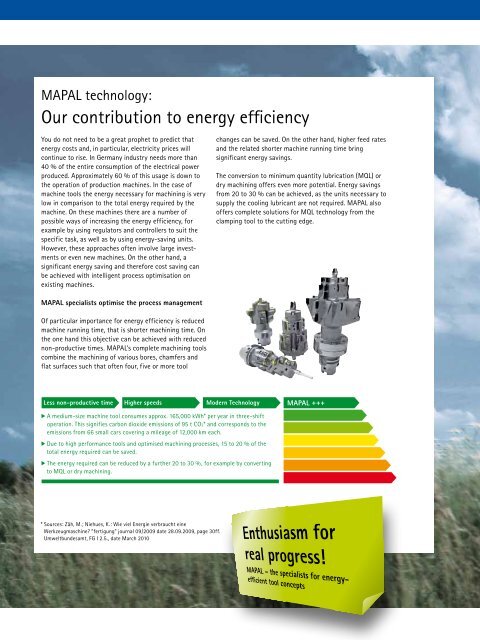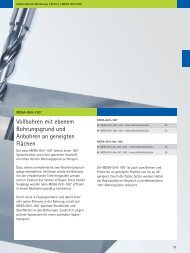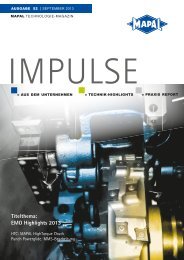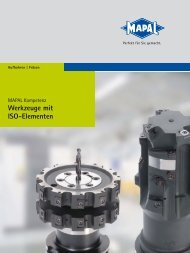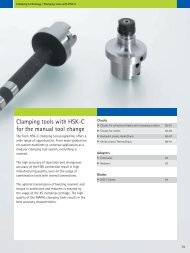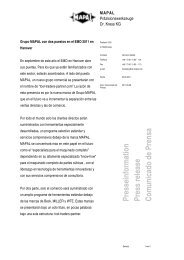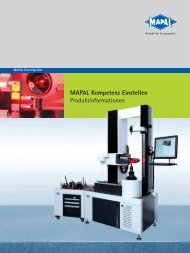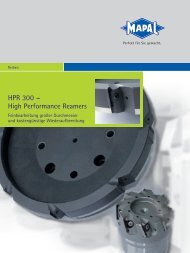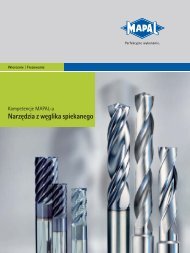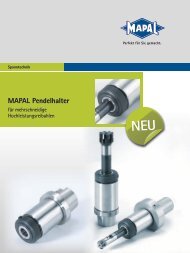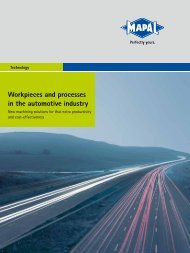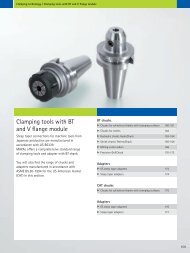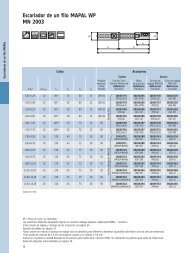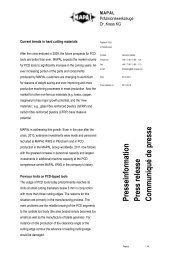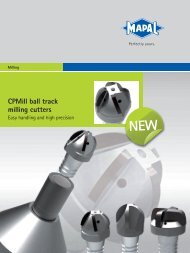Download pdf - MAPAL Dr. Kress KG
Download pdf - MAPAL Dr. Kress KG
Download pdf - MAPAL Dr. Kress KG
Create successful ePaper yourself
Turn your PDF publications into a flip-book with our unique Google optimized e-Paper software.
<strong>MAPAL</strong> technology:<br />
Our contribution to energy efficiency<br />
You do not need to be a great prophet to predict that<br />
energy costs and, in particular, electricity prices will<br />
continue to rise. In Germany industry needs more than<br />
40 % of the entire consumption of the electrical power<br />
produced. Approximately 60 % of this usage is down to<br />
the operation of production machines. In the case of<br />
machine tools the energy necessary for machining is very<br />
low in comparison to the total energy required by the<br />
machine. On these machines there are a number of<br />
possible ways of increasing the energy efficiency, for<br />
example by using regulators and controllers to suit the<br />
specific task, as well as by using energy-saving units.<br />
However, these approaches often involve large investments<br />
or even new machines. On the other hand, a<br />
significant energy saving and therefore cost saving can<br />
be achieved with intelligent process optimisation on<br />
existing machines.<br />
changes can be saved. On the other hand, higher feed rates<br />
and the related shorter machine running time bring<br />
significant energy savings.<br />
The conversion to minimum quantity lubrication (MQL) or<br />
dry machining offers even more potential. Energy savings<br />
from 20 to 30 % can be achieved, as the units necessary to<br />
supply the cooling lubricant are not required. <strong>MAPAL</strong> also<br />
offers complete solutions for MQL technology from the<br />
clamping tool to the cutting edge.<br />
<strong>MAPAL</strong> specialists optimise the process management<br />
Of particular importance for energy efficiency is reduced<br />
machine running time, that is shorter machining time. On<br />
the one hand this objective can be achieved with reduced<br />
non-productive times. <strong>MAPAL</strong>’s complete machining tools<br />
combine the machining of various bores, chamfers and<br />
flat surfaces such that often four, five or more tool<br />
Less non-productive time Higher speeds Modern Technology <strong>MAPAL</strong> +++<br />
A medium-size machine tool consumes approx. 165,000 kWh* per year in three-shift<br />
operation. This signifies carbon dioxide emissions of 95 t CO2* and corresponds to the<br />
emissions from 66 small cars covering a mileage of 12,000 km each.<br />
Due to high performance tools and optimised machining processes, 15 to 20 % of the<br />
total energy required can be saved.<br />
The energy required can be reduced by a further 20 to 30 %, for example by converting<br />
to MQL or dry machining.<br />
7<br />
6<br />
5<br />
4<br />
3<br />
2<br />
1<br />
* Sources: Zäh, M.; Niehues, K.: Wie viel Energie verbraucht eine<br />
Werkzeugmaschine? “fertigung” journal 09/2009 date 28.09.2009, page 30ff.<br />
Umweltbundesamt, FG I 2.5., date March 2010


